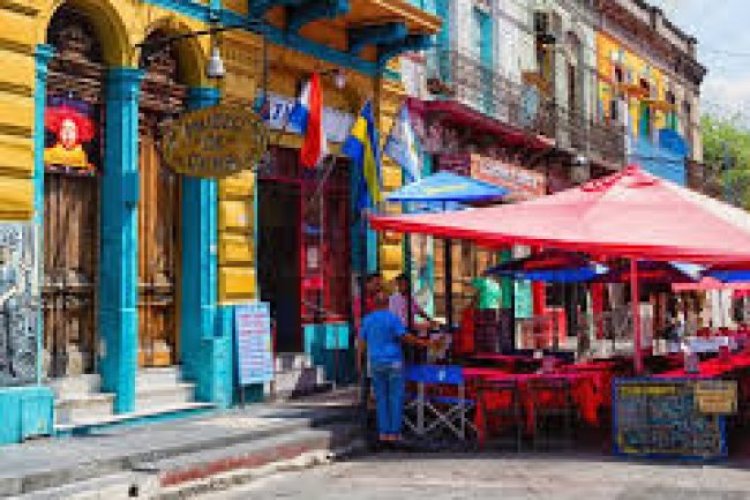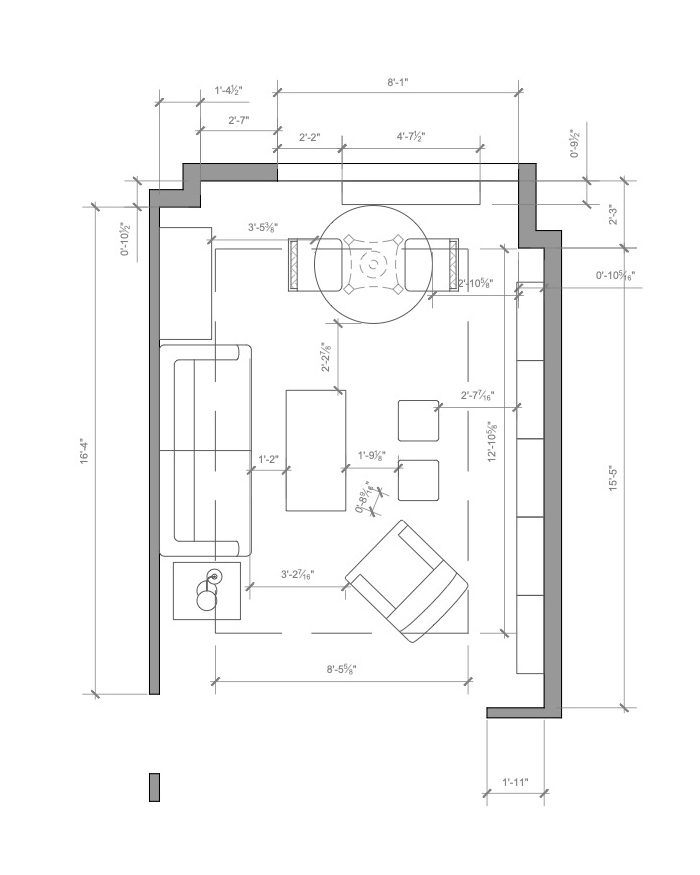15 places to see in Argentina
15 places to see in Argentina - The South American country is immense and offers many attractions for visitors: from the refined capital Buenos Aires to the boundless Patagonia

15 places to see in Argentina - The South American country is immense and offers many attractions for visitors: from the refined capital Buenos Aires to the boundless Patagonia

15 places to see in Argentina
When you think about what to do and what to see in Argentina , you are spoiled for choice. The South American country is immense and offers many attractions for visitors: from the refined capital Buenos Aires to the boundless Patagonia , from the alpine mountains of Bariloche to the lunar ones of Salta, from the immense vineyards of the Mendoza area to the magnificent historic center of Córdoba , from the spectacle of Iguazu Falls to the Whale Falls off the Valdés Peninsula .
The incredible variety of its geography and its vibrant culture, a mix of indigenous roots and European influences, give life to a country full of ideas, contrasts and great passions. Like the tango , a fascinating expression of the Argentine lifestyle. Or like football , a favorite topic of people on the street and in cafes. And again the kitchen, where the best carne asada in the world triumphs.
Costa cruises in South America take you to explore Argentina through a series of stops and excursions to the country's most beautiful beaches and places, starting from Buenos Aires to Patagonia. Here are the places not to be missed on a trip to Argentina.
15 places to see in Argentina
Buenos Aires
Buenos Aires is very often the first stop on a trip to Argentina, and in any case you cannot pass through this country without visiting its capital. There is also a Costa excursion that takes you to its discovery!
It is also called " the Paris of South America " for its elegance, the large tree-lined avenues, the buildings reminiscent of those of the French capital and the great European cities. But of course there is much more: the popular or trendy neighborhoods with their lively cultural life, the cult of the fiesta, the tango, the cuisine. Buenos Aires deserves a long visit to get to know it, discover it and experience it to the fullest.
It starts with an exploration of the metropolitan center, where you can stroll around the Casa Rosada (the presidential palace) and the sumptuous Opera House and take a break in the historic cafes , which have been (and still are) the hub of city culture: there there are about eighty classified as notables, protected by a law that preserves them as historical heritage. Among the most famous, Tortoni, Las Violetas, Los 36 Billares, Bar Britànico, Cafè Margot.
Do not miss an evening based on tango: on the other hand, the famous and sensual dance was born here. You can admire it during the shows that are often held on the street (the most popular are those in Plaza Dorrego) or in the dedicated rooms, the milongas .
If you have to choose the most characteristic places to see on your city tour, focus on three in particular. La Boca , the port district founded by Genoese immigrants, with its brightly colored sheet metal houses and popular atmosphere: pass by the Bombonera, the Boca Juniors stadium, to understand what Argentina's passion for football is. San Telmo , a lively and genuine area that abounds with bars and shops. Finally Palermo , the most artistic and trendy district, full of bohemian clubs and craft workshops and home to a famous market.
La Plata
The capital of the province of Buenos Aires is La Plata, 60 km south of the Argentine capital. It is a truly original city, also a destination for Costa excursions . The merit is of its center, which has a map that leaves you amazed. It was designed in the mid-19th century by the great urban planner Dardo Rocha in a rationalist style: looking at it from above is like seeing a perfect design, consisting of a network of streets interspersed with orderly squares and parks.
The urban structure is made up of two main and perpendicular streets , which intersect in Plaza Moreno: it is the geometric center of La Plata, from which the diagonal avenidas branch off and branch off throughout the city. Each meeting point of the most important perpendicular streets consists of a garden or a small park. It is no coincidence that its nickname is " la ciudad de las diagonales ". Walking and finding your way around is very easy even for those who have never been here.
You can visit the Cathedral of the Immaculate Conception , to which the locals are devoted: in neo-Gothic style, it was modeled on the cathedrals of Amiens and Cologne and has stones of different colors (pink, black, gray). Near Plaza Moreno is the Argentino Theater (the second largest opera house in the country), a large gray building that looks like a fortress, an example of the brutalist architecture of the military regime. Stop for a visit to the Museo de La Plata, which tells about the city and its transformations starting from the prehistoric fossils found in these parts.
Patagonia
A mythical land that exerts a magnetic fascination on travelers, Patagonia occupies the southern part of South America, and it is also possible to arrive here on a Costa cruise. The Andes divide it in two parts, the more luxuriant Chilean one and the more arid Argentine one. Coming down from Buenos Aires, the verdant landscape of the Pampas gives way to an infinite expanse of steppes and plateaus, a panorama that at the same time confuses and excites.
Patagonia is littered with naturalistic wonders unique to South America . The main attraction on the east coast is the Valdes Peninsula, a prime spot for whale watching.
Moving instead close to the Andes, proceeding from north to south, you will first come across Bariloche , a mountain resort that looks like a village in the Alps in all respects, surrounded by lakes and mountains. We then arrive in Trevelin, a town of Welsh origins, close to the two green oases of the Reserva Natural Nant & Fall and the Los Alerces National Park.
Further south are El Chaltén , a mecca for trekking lovers and gateway to the two granite giants of Cerro Torre and Fitz Roy. From El Calafate, on the shores of Lake Argentino, we set off instead to go and see the magnificent Perito Moreno glacier. Finally, after passing the Strait of Magellan, here is the wild Tierra del Fuego and Ushuaia , the southernmost city in the world, where you can walk through pristine forests and admire the colonies of penguins.
Ushuaia
Welcome to the " end of the world ". Located on the southern coast of the Big Island of Tierra del Fuego, three thousand kilometers from Buenos Aires, Ushuaia is the southernmost city on the planet, and can also be reached on a Costa cruise. The spectacular scenery that welcomes visitors lives up to its name: the town stands on the Beagle Channel, closed behind by the Martial Mountains.
The first modern settlement was built in the second half of the nineteenth century by English missionaries, who settled in this area already populated for millennia by the indigenous people of the Yamana . Ushuaia then became the seat of a penal colony, closed in 1947, and was then rebuilt by Italian immigrants who left an imprint on the local culture: in the restaurant, alongside typical specialties such as centolla (a large and tasty crab), you they can also find bagna cauda and bonet, typical of Piedmont.
The city is small and pleasant, but it attracts visitors above all for the naturalistic wonders of the area. Consider a boat ride to explore the Beagle Channel, dotted with islets, as a must: you can admire the colonies of penguins up close, and indeed some tours even allow you to take a walk among them.
The mountains behind the city offer pleasant trekking itineraries, in particular the one that leads up to the white expanse of Glaciar Martial . But the most popular attraction on land is the End of the World Train, a steam railway that departs a few kilometers from the city and takes passengers through the wilderness of Tierra del Fuego National Park. The park, filled with forests, lakes and streams, is another great place for hiking.
Tigre and the Paraná Delta
Tigre is a small town located 30km north of Buenos Aires, a perfect distance for a nature hike even if you arrived here on a Costa cruise. Already at the beginning of the 1900s, the noble portenos (the nickname of the inhabitants of the capital) moved here on weekends to relax enjoying the fresh air and the pristine nature of the Paraná river . Today it is a tourist resort active all year round and also frequented by international visitors, a city with a lively cultural life, with a production of quality craftsmanship: if you want to find the best Argentine antiques, you must come here.
Tigre is located on the banks of one of the most important rivers in South America and is also crossed by a series of other waterways that create an oasis of river islets, rich in flora and fauna and delightful to visit. The city center is divided in two by the Paraná: to the south stands the center, a place for socializing and nightlife, with numerous bars and restaurants ; to the north unravels the maze of water and islets that are part of the vast river delta.
A day in Tigre cannot be separated from a trip to the Delta , taking you to the wildest bank of the river by navigating among the islets. If you want to explore this area better, know that the waters extend along a labyrinth of hundreds of kilometers of canals, where you can also see the simple lifestyle of the local populations.
Valdes Peninsula
The Peninsula Valdés , 1400 km south of Buenos Aires, is the first taste of Argentine Patagonia. It stretches out into the Atlantic Ocean in a hammer shape across an isthmus. Most of its territory is arid, desert, lunar, interspersed here and there with salt lakes .
Valdés has Puerto Madryn as its main city , on the shores of the Golfo Nuevo. It was founded by the English colonists in 1886 for its position, one of the most sheltered points on the coast. Here the main protagonist is the sea: in the city the Museum of Natural Sciences and the Oceanographic are to be visited , at the port, where you can learn about the flora and fauna of Patagonia , marine animals such as giant squid.
But then immerse yourself in nature: the Valdes Peninsula is famous for the extraordinary shows of the whales that come here to mate and give birth between May and December, attracted by the calmer and warmer waters than other ocean areas. Embark on one of the many tours to discover the sea and cetaceans between the Golfo Nuevo and the Gulf of San José, admiring the evolution of the southern right whale that throws its tail out of the water. You can also come across elephant seals, sea lions and killer whales, and colonies of Magellanic penguins. This is why Valdés is a UNESCO World Heritage Site.
El Calafate
For anyone venturing to discover Patagonia, El Calafate is a must. Not so much for the town itself, which still offers travelers all the facilities and services they may need, but because it is the gateway to Los Glaciares National Park , where one of Argentina's most incredible natural attractions is located and of South America: the Perito Moreno glacier .
It is about 80 km from El Calafate and can be reached comfortably by one of the many buses or by renting a car, an option that allows you to go and see it at less crowded times. Once you reach the viewpoint, you won't believe your eyes: the gigantic glacier juts out into the waters of Lake Argentino with a 5 km long wall and up to more than 70 meters high. The Perito Moreno advances two meters every day and from time to time huge blocks of ice come off the front and fall into the water with an impressive roar. You can spend hours and hours hypnotized admiring the show.
From El Calafate there are also cruises in the lake which, slalom between icebergs of all shapes and sizes, take you to admire the Upsala, Spegazzini and Perito Moreno glaciers up close. Some agencies in the city also organize trekking on the surface of the glacier.
Bariloche
San Carlos de Bariloche, known simply as Bariloche, sits on the shore of Lake Nahuel Huapi in the foothills of the Andes in northwestern Patagonia, and is the largest city in the Lakes Region .
Immersed in a wonderful typically alpine mountain scenery, it is a renowned tourist destination that attracts visitors from all over the world. Here you will always find something exciting to do, in any season of the year: in winter you can ski on the snows of Cerro Catedral , in the warm months you can practice trekking, fishing, rafting, canoeing, cycling and horseback riding.
Bariloche has a curious history. Initially born as a center for the trade of skins and livestock between Chile and Argentina, in the 1930s it was rebuilt inspired by the architecture of the Alps, with wooden and stone houses, so much so that it earned the nickname "Switzerland of the Andes" . Strolling through the center you can admire buildings such as the Centro Cívico and the Neo-Gothic cathedral of Our Lady of Nahuel Huapi , and you will really feel like you are in a European village. Be sure to visit the characteristic cafes and taste the chocolate produced here, the best in Argentina.
The paths that climb the surrounding mountains offer splendid unspoiled scenery. In the surroundings of Bariloche there are also numerous welcoming beaches for a relaxing day in the sun, such as Playa Bonita, Playa Melipal, Playa Serena and Villa Tacul on Lake Nahuel Huapi, or those of Villa Los Cohiues and the western shore of Lake Gutiérrez. But be careful, before you go for a swim: the water is quite cold.
El Chaltén and Fitz Roy
El Chaltén is a small mountain village lost in thin air at the foot of the Andes, and over two hundred kilometers from the nearest town (El Calafate). It is a quiet place inhabited by a handful of people, made up of colorful houses and dirt roads. Yet it is considered the Argentine capital of trekking, because from here starts a dense network of paths that lead into the fabulous scenery of the Los Glaciares National Park, between lakes and glaciers.
El Chaltén has basic services to accommodate hikers, but don't expect the comforts of more developed tourist centers. But on the other hand, people come here to walk, and those who go as far as El Chaltén are looking for nothing else.
Above all, the village is the starting point to reach two legendary mountains, among the most coveted and feared by climbers from all over the world: Cerro Torre and Fitz Roy (also known as Cerro Chaltén). There are two impressive granite pinnacles, the first 3128 meters high and the second 3405 meters, the scene of extraordinary mountaineering feats.
For "normal" hikers the ascent to the top of the two mountains is unthinkable, but it is possible to approach it by trekking for one or more days to admire the breathtaking panorama of the peaks. One of the most popular trails is the one that leads to the Laguna de Los Tres, from where there is a simply unforgettable view of the Fitz Roy, which alone is worth the trip to El Chaltén.
Iguazu Falls
Speaking of waterfalls, in the case of those of the Iguazú , is an understatement. On the border between Argentina, Brazil and Paraguay there is an entire region where water is the absolute protagonist: an expanse of 275 waterfalls generated by the great river, listed by Unesco as a World Heritage Site . The Iguazu National Park is one of the wonders of South America, frequented by tourists from all over the world, who spend a few days here taking advantage of the great tourist offer in the area, with hotels and restaurants.
The Iguazú draws a curve and plummets 70 meters as if it collapses on itself, creating a unique setting that will remain etched in your mind. Walk along the numerous trekking paths that allow you to reach various panoramic points. The most impressive sight is the Garganta del Diablo (Devil's Throat), the highest and deepest waterfall as well as a national symbol: the power and the roar of the jump convey all the power of nature.
There is also the possibility of reaching the falls with a jeep as part of safari routes. Or, coming from the Argentine side, you can get on the panoramic trains that run through two circuits: one that follows the falls to the water level, and another higher up that passes over suspension bridges from which to admire the whole panorama.
Skip
Northwest Argentina is the least explored and perhaps most interesting region for those looking for something other than the country's most popular attractions. Salta , 1500 km from Buenos Aires, is the nerve center of this area, a pleasant town that can serve as a reference point for venturing into the surrounding parks and villages.
In this part of Argentina, the presence of the indigenous mountain culture is clearly noticeable, which blends with that of the gauchos of the plains and with the urban one of those who have come from the big cities, giving life to an original mix. So in Salta, also known as "La Linda" (the beautiful), you can find colonial buildings, modern palaces, boutique hotels, Indian markets , exotic plants, wide European-style avenues.
From Salta it is a must to take a car and go north to see the rugged and unique scenery of the Quebrada de Humahuaca . After passing the village of Tilcara, home to a beautiful Indian textile market, and a valley populated by giant cacti, you enter a lunar world that has no equal: the Quebrada (means "rift") is a 150 km long canyon with rock walls of multiple colors, from red ocher to yellow, from see to purple. Reach the Cerro de los Siete Colores near Purmamarca, a suggestive mountain characterized, in fact, by seven colors one above the other.
Jujuy and the Grandi Saline
That of the Salinas Grandes (Great Salt Flats), in the province of Jujuy almost on the border with Chile, is becoming one of the most iconic landscapes of Argentina . We are in the Andes, at 3350 meters above sea level, but the landscape is not made of snow-covered peaks, but of white desert. The Salinas Grandes, between the villages of Purmamarca and San Antonio de los Cobres, are an infinite expanse (12 thousand hectares) of salt, an almost extraterrestrial place.
The lagoon was formed thanks to the salt-rich waters produced by the volcanic activity of the surroundings, which evaporating left a 30 cm thick white crust .
Getting to the Salinas Grandes is already an adventure in itself. It starts from Purmamarca , a thousand meters below, and passes several hairpin bends along the national road 52 up to the Cuesta de Lipán pass, at 4170 meters. Going down, the white desert opens up, sometimes covered with a layer of water in the rainy season. To better enjoy the dazzling view of the salt flats, it is best to arrive early in the morning or late afternoon.
Mendoza
The Mendoza area offers interesting attractions for nature lovers: the city is located about a thousand km from Buenos Aires, at the end of the immense plain of the Argentine pampas, where the first hills of the Andes begin. But you cannot miss a visit especially if you are a wine lover : here you come to tour the cellars, from the oldest to the most modern, with vineyards as far as the eye can see immersed in the panorama of the Andean peaks, to be explored by car or on horseback. . The most famous wine produced in Mendoza is the prized Malbec , to be enjoyed together with the Argentine steaks among the best and most natural in the world.
Mendoza, known as "the land of sun and wine", has a center characterized by squares and large tree-lined avenues where it is a pleasure to walk . Going around the city, don't miss the Plaza España, with its Andalusian-style buildings, the Plaza Independencia, where some of the best restaurants are located, and the green space of Parque General San Martín.
Mendoza is also an excellent starting point for walks, long treks and horseback excursions. About three hours from the city is the Parque Nacional Sierra de las Quijadas , where you can go rafting and mountain biking.
Córdoba
700 km northwest of Buenos Aires lies the city of Córdoba, the second largest in Argentina. It was one of the first cities in South America, founded by Spanish missionaries , and still bears many traces of the domination of the Iberian crown. It is located in the heart of the pampas plain, on the banks of the Primero River and near the small mountain range of the Sierras Chicas.
This strategic position made Córdoba the largest economic center of the country for centuries; in the second half of the twentieth century it was the hub of the national aviation industry. Its wealth has resulted in a beautiful city full of architectural attractions. Visit the central streets and stop at Manzana Jesuítica , the former mission built by the first religious of the Society of Jesus in the 1600s: now it houses a university and several schools. Stroll through the streets Humberto Primo, Avenida Colón, General Paz, and explore the neighborhood of Cerro de las Rosas with its restaurants and shops in the old buildings. And stay there in the evening for a tour of the lively nightclubs.
Trevelin
Trevelin is located in central western Argentina, almost on the border with Chile, in the remote Patagonian province of Chubut . Despite being a small town, it offers several reasons to visit it. First of all its uniqueness: the city was founded in 1888 by settlers from Wales and owes its name to a curious mix between the three Welsh words (house, village) and felin (mill). Even today that culture is very much alive: Celtic is taught in schools, there are several tea rooms, road signs are in three languages (Spanish, Welsh and Mapudungun, the Chilean language) and festivities linked to origins are celebrated.
Trevelin is in a strategic position for those who want to explore this part of Andean Patagonia: it rises at the end of the immense prairies in the center of the country, just before the mountain ranges. On the one hand the landscape is that of grazing herds, on the other the cypress woods populated by wild animals begin. From here you can make wonderful excursions in the Reserva Natural Nant & Fall and in the Los Alerces National Park, walking among the larch trees along the Arrayanes river and reaching the panoramic Lake green.

















